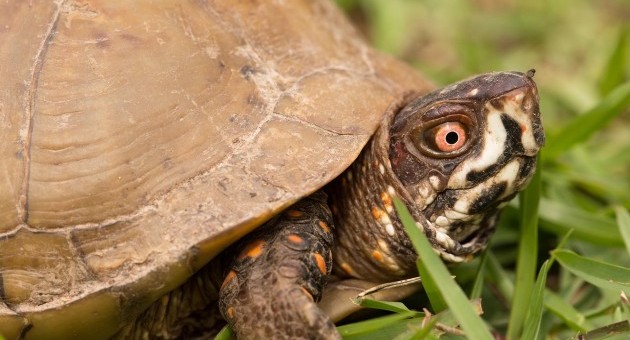Keiko, the killer whale that starred in the Free Willy movies of the 1990s, turned his back on the freedom of the open seas in favor of close company with humans, leading a marine mammal specialist to note that the whale would be happier in captivity where he can be fed.
“...A kiss, a clap and a bucket of herring a day is the only thing that Keiko the killer whale wants. The best thing would be to take him back to an aquarium where he is happiest,” said Norwegian whale researcher Nils Oeien.1
After several years of attempts to acclimate the whale to his native territory off the coast of Iceland, Keiko’s monitors lost track of the whale in August and later found him nearly 900 miles away in a Norwegian fjord. Instead of cavorting with other killer whales, Keiko was giving rides to children and accepting food handouts from their families.
Keiko’s obvious affinity for people is considered a setback for the re-introduction project. Project monitors feared that the whale would expend too much energy playing with humans instead of hunting for the fish he needs to survive, but they decided against luring the whale back to open waters. However, they will resume feeding him if necessary.
Politics entered the discussion. Because Norway hunts minke whales in defiance of an international moratorium on whale hunting 2, government ministers feared an international backlash if the whale died in Norway’s territorial waters.3 Therefore, the Norwegian government forbade people from feeding him or coming closer than 165 feet, effectively ending the up-close-and-personal visits.
History
Keiko’s age is estimated to be 26 years. He was captured as a young whale in Icelandic waters in 1978 and spent most of his life in captivity. He was living at a Mexican aquarium when Free Willy was made in 1993. The film generated sympathy for the whale, sympathy that was parleyed into a multi-million dollar fund-raising campaign by activists who oppose keeping marine mammals in captivity.
In 1996, Keiko went to the Oregon Coast Aquarium to live in a tank specially built for him and to raise more money for the attempt to release him. In 1998, he was moved to a tank in the waters off the coast of Iceland, and this August, after four years of attempts to convince him to leave human company, he finally left his keepers behind and headed to sea with other killer whales.
The Humane Society of the US took over the Keiko project and the Ocean Futures Society monitored the whale’s re-acclimation to the wild. Keiko was still monitored by satellite but had not been seen for six weeks when he turned up in the fjord, perhaps initially attracted by fishing boats in the area.
Big bucks
Keiko’s case is not unique. Although no other animal has generated a $20 million fund-raising campaign, other animals have been used to raise funds for animal rights groups, including another killer whale found sick in Puget Sound and a mixed breed dog abandoned on a sinking ship in the Pacific.
In July, after dollars poured in and international pressure to rescue the dog left on the ship reached a crescendo, Fox News did a story titled “Animal rescues bring in big bucks to special interests.” Interviewed for the feature, NAIA president Patti Strand told Fox that many foundations are created specifically to raise money for a single charismatic animal while thousands languish in shelters.
Keiko’s future
Oeien said that Keiko might not be able to survive the harsh winter in North Atlantic waters and that it might be kinder to kill him than to subject him to starvation. Oeien received threats for expressing this opinion.4
“I hope that this situation works out well for all. Those who are responsible for catching Keiko again must accept responsibility,” Oeien said.
“It is utopian to think he can ever be ‘wild.’ If this doesn’t happen I am afraid he faces death by starvation. And in that case it would be best and kindest to put Keiko to death. We can hope that he leaves Norway and passes the dilemma to others but it seems that he is happy up in Skålvikfjorden. That is his life – playing, with people around him,” Oeien said.
A spokesman for the Ocean Futures Society disagreed, saying that they were monitoring the whale and could step in to help him if necessary.
The effort to send Keiko back to the ocean took more than six years and cost more than $20 million.
“I think the entire Keiko story is more or less crazy,” said Oeien. “Millions have been used to tame him, in order to turn him into a movie star. Then millions more are used to try to make him wild again.”
On September 8, Keiko remained in the fjord but appeared listless, causing activists to claim that his romps with people exhausted him, reawakening a ‘captive mentality’ and putting his life in jeopardy.
 |
Like this article? Don’t forget to share, like or follow us |
 |
NAIA WEEKLY ROUNDUP
FEATURED & LATEST ARTICLES
GET THE NAIA WEEKLY ROUNDUP VIA EMAIL FOR FREE
Stay Connected with The NAIA: Sign Up for The Weekly Roundup
Join our FREE newsletter and community of animal advocates and receive The NAIA Weekly Roundup straight to your inbox. Stay in the loop with the latest news, events, and ways you can make a difference in the lives of animals. Sign up now to stay informed to create positive change!
Sign Up




 A Question of Neglect, A Legendary Primatologist Passes Away, and More!
A Question of Neglect, A Legendary Primatologist Passes Away, and More!
 Shelter Spay Pushback, A Contentious Ostrich Cull, and More!
Shelter Spay Pushback, A Contentious Ostrich Cull, and More!
 Bad Dog Stories, Goodbye Cephalopod, and More!
Bad Dog Stories, Goodbye Cephalopod, and More!
 A Conference Call for You, A Fallen Elephant, and More!
A Conference Call for You, A Fallen Elephant, and More!


